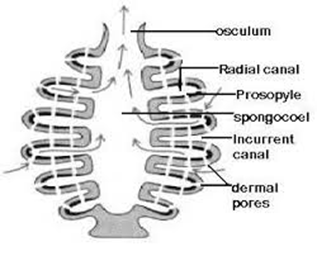Herdmania : Retrogressive Metamorphosis , Characteristics | Biology Blog
Metamorphosis In Herdmania
Metamorphosis is the biological process in which an organism starts to develops physically after birth or hatching. During the development, the organism's body starts to develop inits original or mature form, and the habit also starts to develop. There are numerous examples of metamorphosis Like tadpole that grows and changes into Adult Frog. The young of such are called larvae.
The juvenile swimming larva that Herdmania gives birth to has characteristics like the notochord, dorsal neural tube, and specific sensory organs. After metamorphosing, this swimming larva becomes an adult, and distinctive traits change along with it. The adult one has characteristics like a pharynx with stigmata and an endostyle, which reveal that it is a chordate. Retrogressive metamorphosis is the name given to this type of metamorphosis, which exhibits deterioration from larva to adult.
Retrogressive metamorphosis takes place in two ways -
Retrogressive Changes - Retrogressive changes involves degeneration of larval character and disappearance of the following structure -
- The long tail with caudal fins of larva slowly becomes small and finally disappears.
- Caudal muscles and nerve chord disappear.
- The notochord also disappears.
- Sense organs and sensory vesicles degenerated.
Progressive Changes - In the progressive changes some larval structures of Herdmania elaborate and specialized in adult form, like -
- The trunk becomes pear-shaped by loss of tail and four large ampullae grows out of its four corners and two smaller ectodermal ampullae appear dorsoventrally.
- Feeding starts with incoming ciliary water current.
- The atrial cavity becomes extensive.
- The neural and nerve ganglion comes between mouth and atripore.
- The heart develops.
- The liver develops, intestine develops, and guts become curved.
- Gonads and gonoducts arise from the mesodermal cells.
Features Of Herdmania -
- Herdmania's cylindrical or oval body is covered by a tunic that shields and covers its internal organs.
- Herdmania adults can grow as long as 10 cm.
- Herdmania might be green, yellow, brown, or even gray.
- Herdmania is a filter feeder, which means that it consumes minute particles floating in the water.
- The Herdmanian larvae are free-swimming and resemble tadpoles.
- Herdmania have sticky papillae that aid in substrate attachment.
- Herdmania possesses both male and female reproductive organs, making it a hermaphrodite.
- Herdmania is capable of asexual reproduction through budding.
- As Herdmania is sensitive to pollution and changes in the environment, it is employed as a bioindicator of water quality.






Comments
Post a Comment